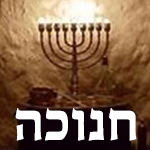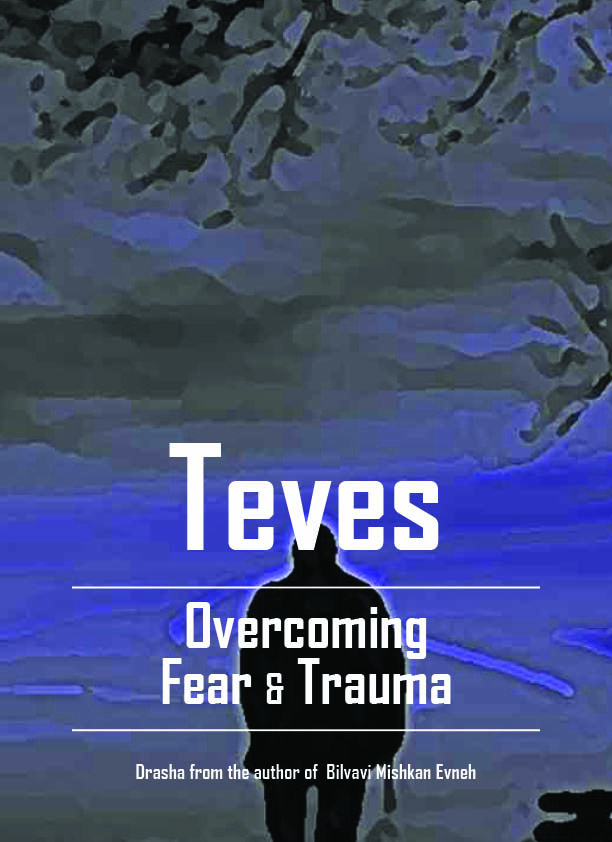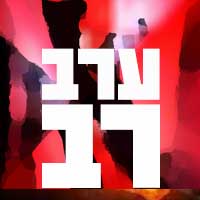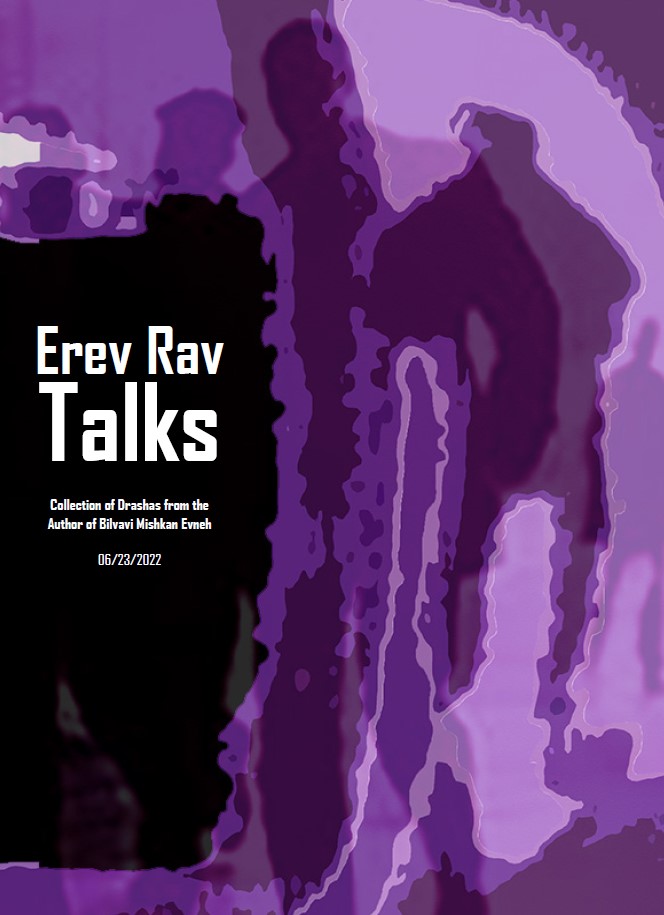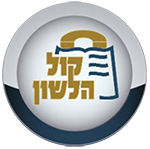- להאזנה ראש חודש שבט 004 תמוז שבט נפתלי
004 Tamuz | Naftali
- להאזנה ראש חודש שבט 004 תמוז שבט נפתלי
Rosh Chodesh Tribe - 004 Tamuz | Naftali
- 3753 reads
- Printer-friendly version
- שלח דף במייל
Tamuz Corresponds To The Tribe of Naftali
The month of Tamuz, according to the Gra, corresponds to the tribe of Naftali.
Naftali’s Name Is Rooted In Connection and Prayer
When Naftali was born, Rachel proclaimed, “Naftulei Elokim niftalti”, “G-d has answered my persistent prayers.”[1] Rashi explains three reasons for Naftali’s name. The word “Naftali” connotes either: (1) connection, (2) persistence, and (3) prayer.
[In this derasha, it will be explained how Naftali’s primary blessing is that he enables “connection”, facilitated through “prayer”].
Naftali’s Blessing – The Fruits of Ginosar
In the blessing of Yaakov to the tribes, Naftali’s blessing is that he is “swift as a gazelle, who bears good tidings.”[2] In the blessing of Moshe, Naftali’s blessing is “Naftali is satisfied, and he is full of blessings of Hashem.”[3] Rashi explains that Naftali’s blessing is that his portion of land is where the “fruits of Ginosar” grow. These fruits are the most blessed fruits in Eretz Yisrael, they are very sweet-tasting, and they grow very swiftly.
Naftali – The Illumination of Gan Eden On This World
Why are Naftali’s fruits blessed? The Gemara says Bais Sha’an, which is in Naftali’s portion of land in Eretz Yisrael, is where the entrance to Gan Eden is.[4] Thus, not only did the fruits in his portion grow quickly, but his portion of land contains an entrance to Gan Eden.
The Torah says that Hashem placed a churning sword of fire at the entrance to Gan Eden, to guard the path that leads to the Eitz HaChaim (the Tree of Life). That entrance to Gan Eden is in Bais Sha’an. So on one hand, Bais Sha’an is the area where there is a churning sword (cherev) of fire, which symbolizes destruction (churban). That is one side of the coin to Bais Sha’an: It connotes destruction. On the other hand, the Sages teach that when the tribes were about to bury Yaakov in the Cave of Machpela, Esav tried to prevent them, and Naftali ran swiftly to retrieve the documents showing that Yaakov had the rights to buried in the final spot in the cave.[5] Thus, it was Naftali who enabled Yaakov to be buried in the Cave of Machpela, which was in “Chevron”. Naftali enabled “Chevron”, the antithesis of cherev (sword/destruction), the antithesis of Esav who acted like a “churning sword of fire”, when he tried to prevent Yaakov from burial by standing in front of the cave of Machpela.
A cherev, a sword of fire, was placed at the entrance to Gan Eden, separating Gan Eden from the outside world. But Naftali’s portion contains the entrance to Gan Eden, where the churning sword was place, and Naftali implies connection [as cited earlier from Rashi]. Naftali’s power of “connection” would enable Yaakov to become connected with the Cave of Machpela.
When Adam and Chavah were sent out of Gan Eden, they lost the special fruit which grew swiftly in Gan Eden. Hence, Naftali’s blessing of swiftly growing fruit, which was connected with Gan Eden, was really an illumination of Gan Eden onto this world. The fruits of Naftali, the “fruits of Ginosar” which are in Beis Shaan, are blessed by the opening of Gan Eden there, which shines an illumination of Gan Eden into world outside, enabling a connecting point to Gan Eden.
The Fruits of Ginosar (of Naftali’s Portion) Are More Prominent Than Bread
The “fruits of Ginosar”, the crops which grow in Naftali’s portion, have special laws when it comes to the laws of blessings over food. Tosafos in Tractate Berachos explain that while there is normally a rule in the laws of blessings on food that bread is the most important food, and a blessing on bread exempts all other foods on the table, there is one exception: the fruits of Ginosar. If there are fruits of Ginosar in one’s meal, even bread becomes secondary to these fruits, and a blessing on bread will not exempt these fruits of Ginosar from a blessing. Bread becomes secondary to these fruits of Ginosar.[6]
The depth of this is because after Adam sinned, he was cursed with “By the sweat of your brow you will eat bread”, and all bread would now have to be earned from hard work as a result of the sin. Bread became spiritually tainted from the effects of the sin. But the fruits of Ginosar, which grew in Naftali’s portion, symbolize Gan Eden, for they grew in a place where there was an opening to Gan Eden. Hence, the fruits of Ginosar symbolize Gan Eden, the level of before the sin of Adam. Hence, bread is secondary in important to the fruits of Ginosar. The bread, which is part of the curse given to Adam, is not as important as the fruits of Ginosar, the fruits of Naftali’s portion, which are from the illumination of Gan Eden.
Naftali’s Power of the Mouth and the Feet
The Sages speak of three different abilities of Naftali: (1) His ability of swiftness [which was explained above]. (2) The “speech” of Torah which was in Naftali’s portion, for the Beis Din would convene in his portion of the land). (3) The ability of “satisfaction” of Naftali, for Moshe said “Naftali, seva ratzon”, “Naftali’s will is satisfied”.
Naftali’s ability of “satisfaction”, seva ratzon, is also identified as sechok (laughter). This is because there are 12 senses in the soul, corresponding to the 12 months of the year. Speech corresponds to Nissan, and satisfaction (laughter) corresponds to Adar. The month of Adar, the month of “laughter”, corresponds to the tribe of Naftali.
This laughter is really the laughter of the future. Currently this laughter cannot be complete, due to the existence of sinners, who go against Hashem’s will, which prevents the world from being filled with true laughter. But in the future, when there will be no possibility of going against Hashem’s will, there will be complete laughter. Adar, which contains the power of laughter, is the laughter of Naftali. The month of Adar connects the beginning of the year (Nissan) with the end of the year, revealing laughter throughout the year.
The mouth contains the power of laughter. Naftali’s blessing of seva ratzon, which is the ability of laughter, is therefore an implication that Naftali’s power lies in the mouth. Naftali’s blessing is also that he can run swiftly, which uses the feet. Thus, Naftali’s power lies both in the mouth (laughter) and in the feet (running).
There are different sections of the body. According to one system, the body contains three sections (the head, the torso, and from the stomach and below). According to another system, the body generally consists of two main sections: The head and the rest of the body. The head begins with the skull and ends with the mouth. The end of the body is the feet. Hence, Naftali’s abilities lie in the mouth and in the feet, connecting together the two ends of the body - the end of the head (the mouth), and the end of the rest of the body (the feet).
Naftali’s Power of Prayer
Furthermore, Naftali is compared to the gazelle. There is a verse, “Like a gazelle thirsting on the banks of the water”[7], which refers to a person’s ability of thirsting for connection to G-d through the power of prayer. So the swiftness of the gazelle is also connected with the power of “prayer” that is symbolized by the gazelle, Naftali.
What is the connection? A person cannot be swift when he is too connected with his element of earth, which weighs him down. The “feet” are connected to the element of earth, and with the feet alone, a person cannot overcome the heaviness of the element of earth which slows him down from pursuing the spiritual. Only through the mouth – specifically the tongue, which the Chovos HaLevovos calls “the lightest part of the body” - is a person able to be swift. Naftali’s ability is that he connects the “feet” with the “mouth”, and with the swiftness of the mouth (speech and prayer) the feet are able to run swiftly.
In Gan Eden, Adam was originally on the level of the “mouth”, where he enjoyed tasting the secrets of the Torah. After the sin, when he sent away from Gan Eden, he fell from being on the level of the “mouth” to the level of the “feet, because Adam was cursed with death, “To earth you shall return”, and death connects man to the earth, which the feet stands on and touches.
Yaakov’s burial was in Chevron. The Gemara says that the worst place for growing crops is Chevron, while the best place for crops is Teverya (which was in Naftali’s portion). Thus, when Naftali ran swiftly to retrieve the documents so that Yaakov could be buried in Chevron, the depth behind this was that Naftali’s swiftness enabled Chevron to be connected with “Teverya”. By connecting “Teverya” with Chevron, Naftali’s ability countered Esav’s attempt to prevent Yaakov from Chevron (though ultimately it was not Naftali who prevented Esav, but Chushim the son of Dan).
How did Naftali contribute to stopping Esav’s attempt of preventing Yaakov’s burial in Chevron? It was because Naftali enables a connection of the mouth and feet together - through Naftali, there was now the “mouth” of Yaakov which overcomes the hands of Esav. The power of the mouth is essentially the power of prayer, and prayer can overcome Esav.
And that is the depth behind Naftali’s blessing: his power of prayer, which can overcome Esav.
Naftali – The Revelation of The True Sense of Taste
When the Sages describe the senses (sight, hearing, smell, taste), some of the Sages list the power of speech instead of the power of taste. Before the sin of Adam, the mouth was only used for speech, and taste was a higher sense that was used for intellectual and spiritual comprehension (the secrets of Torah), so the sense of taste was not originally associated with the mouth. After the sin, when taste fell from being on an intellectual and spiritual level down to a sensual level, the mouth would now become a container that holds the abilities of speech and taste.
Naftali’s blessed fruits represent a repaired form of connection between the sense of taste with the sense of speech. In Gan Eden, the sense of taste was only used [by Adam] to “taste” the taamei Torah, the secret explanations and reasons of the Torah. After the sin, when Adam tasted the forbidden fruit, Adam was no longer able to enjoy the taamei Torah.
The Raavad writes that the sense of taste is in the tongue, the cheich, which is from the word chochmah (wisdom), a hint to the true sense of taste, which is used to perceive higher understanding and wisdom of Torah. This will be the reward given out in the future, the understanding of the taamei Torah. Hence, the true use of taste is to taste the chochmah (wisdom) of the taamei Torah. After the sin, Adam lost this sense of esoteric taste and now the sense of taste is in the mouth. Speech was always an ability of the mouth, but before the sin the mouth only housed the ability of speech, because taste was an intellectual and spiritual sense and it was not associated with the mouth. After the sin, when taste was used of evil (by eating from the forbidden fruit), the sense of taste fell from its higher level and now it would be used sensually, and now the mouth would become a container for both speech and taste.
Through the blessed fruit of Naftali, though, there is a return to the level of taste in Gan Eden, when taste was repaired. This is a not a sense of taste is coming from the mouth alone, but a taste that is connected with the speech of the mouth. The ability of speech is connected with the mind, the ability to perceive chochmah (wisdom of the Torah), which is in the head. After the sin, the sense of taste fell from the level of the mind (intellectual and spiritual taste) to the level of the mouth (sensual taste). But through Naftali’s blessing, through the fruits of Ginosar and the waters of Teveria (the Kineret), the speech of the mouth connects the sense of taste to the chochmah (wisdom of Torah), elevating the sense of taste from the mouth to the head.
The Sages teach that there is also horaah, halachic rulings of Torah, which came from Naftali (the Beis Din would convene in Naftali’s portion). Although horaah (rulings of Torah) mainly came from the tribes of Levi and Yissocher, there was only an aspect of horaah that came from the tribe of Naftali, and this was because the members of the tribe of Naftali were blessed in their “mouth”: They were connected to the chochmah of the Torah, by way of the mouth. This was the unique revelation of Torah in the tribe of Naftali.
The sweet fruits of Ginosar in Naftali’s portion, on a deeper level, represented the sweetness of the words of Torah which were enjoyed by the tribe of Naftali. The unique share in Torah which the tribe of Naftali had was mainly about connecting together the chochmah (wisdom) of the taamei haTorah with the speech of the mouth. This produced sweet words of Torah, because it was a connection of the chochmah in the head with the speech in the mouth. It repaired the taste of Adam which had been ruined from eating of the Eitz HaDaas. It is the repaired level of the sense of taste, which reveals an ability to “taste” the chochmah of the Torah – the ability of the Eitz HaChaim (the Tree of Life).
Thus, the fruits of Naftali, which are really rooted in Gan Eden, specifically in the Eitz HaChaim, is the ability to taste the chochmah of the Torah, of which it is said “And wisdom sustains her owner”[8], the higher sense of taste which is connected with the chochmah (wisdom) in the head. Hence, the blessing on Naftali’s fruit wasn’t just that it tasted sweet. The blessing given to Naftali was that he received a revelation of a sense of taste that was connected with chochmah, the wisdom of the Torah. That was the power of Naftali: To connect the sense of taste with the head.
Thus, we have seen so far that Naftali has the power of connecting different levels together (Gan Eden with the world, Teverya with Chevron, the mouth with the feet, the sense of taste with the head). Now we can understand with greater depth the implication behind the word “Naftali”, which Rashi explains as “connection”.
Naftali – The Root of Why Esav’s Head Merited Burial
Based on the above, we can now proceed to understand the following.
The Leshem explains that Leah and Rachel were supposed to born as one woman, but as a result of the sin of Adam HaRishon, their soul became divided into two parts, Leah and Rachel. The war between Yaakov and Esav, the war of the younger versus the older, was also embodied in the “war” between Leah and Rachel – the competition between these younger and older siblings. But from a deeper perspective, Leah and Rachel are really one soul. Only as a result of the first sin were they split into two different souls, but at their root, they are really one soul.
The Sages teach that the head of Esav (after it was severed by Chushim son of Dan) rolled into the Cave of Machpela and was buried there.[9] On a deeper level, this was because Naftali connected Rachel and Leah together, because Naftali connects the mouth [Leah/prayer] with the head [Rachel/wisdom], and therefore Esav, who was originally destined to marry Leah, had a part of him which was buried in the Cave of Machpela. But it is only his head which was buried there, because it is only the head of Esav which was connected with the taamei HaTorah. The rest of Esav’s body was not connected with his head, therefore the rest of his body did not merit burial in the cave of Machpela.
Esav was called ish seir, a hairy man, and he was called asuy v’gamur, he was born made and complete, because he was full of hair. The Sages teach describe the hair as “surplus of the head”.[10] On a deeper level, the hair, the surplus of the head, refers to the taamei haTorah which we currently have no comprehension of. Currently, these taamei haTorah, represented by the concept of hair, which is above the head, cannot be comprehended, because it has fallen into the side of Esav. But at the repaired level, the hairs represent the taamei haTorah which will be revealed in the future.
This was the deeper reason why the head of Esav was buried in the cave of Machpela. Through Naftali, Leah and Rachel were connected, and this repaired the mouth of Esav, because Naftali represents the elevated level of the mouth, thus Esav’s head merited burial.[11]
In Conclusion
Esav was called “Seir”, which also means “hair”, alluding to the future judgment on Mount Seir over the nations of the world. The depth of this will be that the spiritual level of comprehension represented by the “hair” – the taamei haTorah - will be taken back from Esav, and it will be given to the Jewish people.
Rachel and Leah became connected together through Naftali, and this connection is the epitome of the complete unification of the future, when the mouth will become connected with the head, when the taamei Torah (secret explanations of the Torah), which are currently concealed, will become revealed again. May that happen very soon, speedily in our days, with the building of the Beis HaMikdash, Amen V’Amen.
[1] Beraishis 30:8
[2] ibid 49:21
[3] Devarim 33:23
[4] Talmud Bavli Eruvin 19a
[5] Talmud Bavli Sotah 13a (Editor’s Note: Later in the derasha the Rav noted that Naftali’s actions were not needed in the end because Chushim the son of Dan killed Esav in the interim. Still, Chazal praised the swiftness of Naftali when he ran back to retrieve the documents, which showed that Naftali had the potential to allow Yaakov to be buried in the Cave of Machpela.)
[6] See Talmud Bavli Berachos 44a and Tosafos ibid
[7] Tehillim 42:2
[8] Koheles 7:12
[9] Talmud Bavli Sotah 13a
[10] Pri Eitz Chaim (Rabbi Chaim Vital) shaar haTzitzis 3
[11] Editor’s Note: The Ramchal in sefer Daas Tevunos explains that the 10th century (the “Elef haAsiri”) corresponds to the hair.
NOTE: Final english versions are only found in the Rav's printed seforim »


